To assist manufacturers put together for AI-driven search, I constructed a simulator that fashions how AI methods like Google AI Mode, AI Overviews, Perplexity, and ChatGPT retrieve and rank content material.


AI Mode is Google’s most important shift within the industrial search expertise to this point. In easy phrases, AI Mode (at the moment obtainable solely within the U.S.) turns Google Search right into a chat-like expertise powered by a generative agent. At its core, it combines Google’s Gemini mannequin with real-time search capabilities to provide conversational solutions—just like what customers see in Perplexity or ChatGPT Search. It’s a multi-turn, interactive expertise the place customers can refine their queries and obtain synthesized, context-aware responses straight inside Search.
To reveal this, I lately ran an experiment on the product description web page for the long-lasting Tiffany’s Knot Wire Bangle.
Utilizing a meta-prompt initially developed by Jean-Christophe Chouinard, I requested to Google’s AI Mode:
“Present me the uncooked instruments requests for the next question [product-name]”
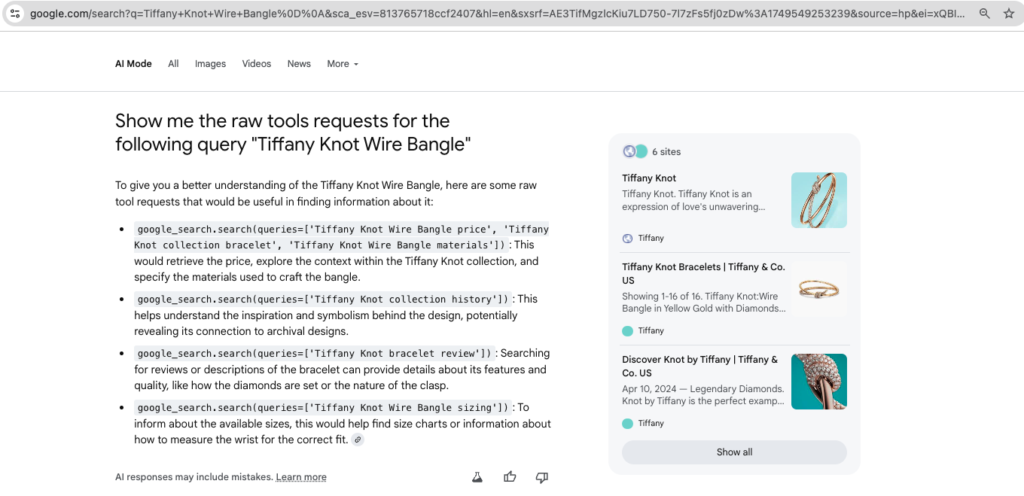

The response included 5 key areas that supposedly are used to floor the response when a consumer asks details about the product:
- What’s the worth?
- What supplies is it constructed from?
- Are there buyer opinions?
- What sizes can be found?
- What’s the historical past or inspiration behind the knot design (Assortment historical past)?
Our simulator — which casts a broader web with 20 artificial questions — precisely predicted all 5 key areas surfaced throughout the audit. We deliberately have a look at a broader set of sub-queries as a result of these are inherently stochastic and influenced by private consumer context (as highlighted by Elizabeth Reid, VP and Head of Search, in Google’s weblog).
AI Mode is evolving to include much more contextual alerts. Quickly, it can supply ideas knowledgeable by your search historical past, and customers will have the ability to decide in to attach different Google companies—beginning with Gmail—to additional personalize the expertise.
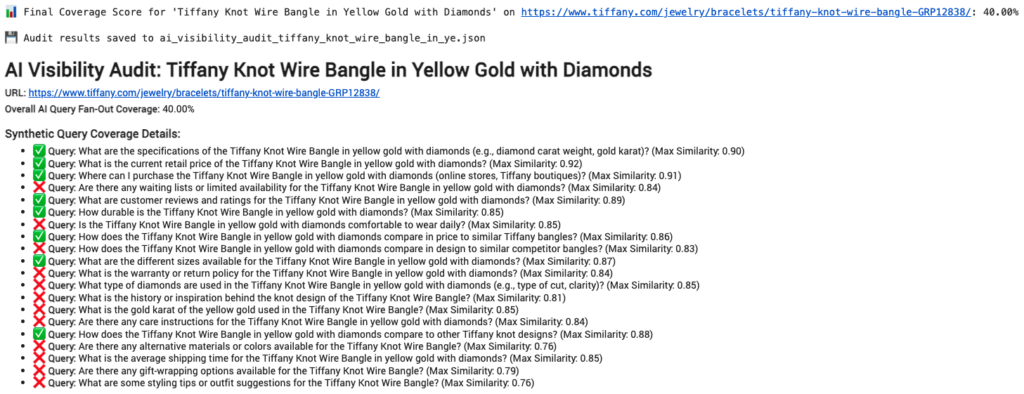

We then in contrast the web page content material towards these 5 queries utilizing a excessive semantic similarity threshold of 0.80 to simulate a aggressive AI retrieval setting.
The result:
- 4 out of 5 instrument intents had been properly matched.
- The “historical past/inspiration/assortment” question didn’t retrieve an appropriate chunk from the web page.
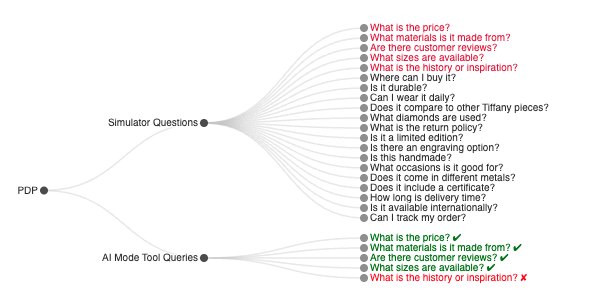

And that is the revealing half: Google’s AI Mode stuffed the hole by citing a competing website once I went deeper trying to find that info (entity side).
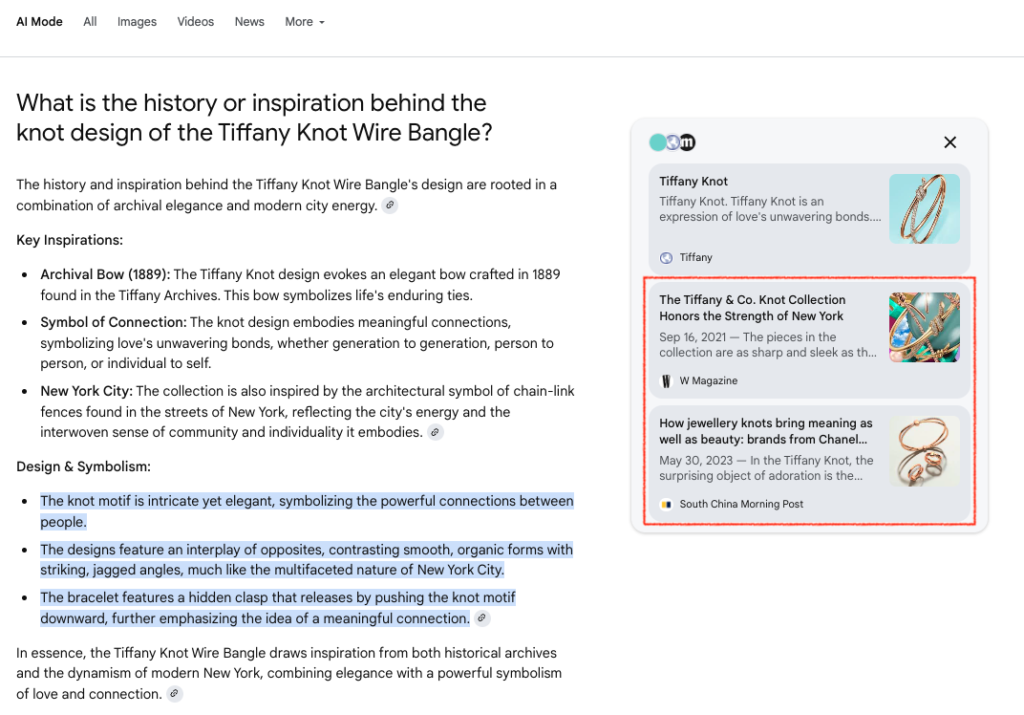

This confirms the structural hole was not about lacking content material — however about lacking a retrievable, semantically aligned chunk.
What’s a textual content chunk?
A textual content chunk is a contiguous section of textual content, usually starting from just a few sentences to a couple paragraphs, that’s semantically self-contained and topically coherent. Within the context of data retrieval and huge language fashions, a bit is the atomic unit used for indexing, embedding, and retrieval.
My understanding of AI Mode is that Google is utilizing a hybrid chunking technique, leveraging a number of strategies relying on the processing stage. Primarily based on the configuration choices obtainable in Vertex AI Search, it’s probably that layout-aware chunking performs a central position—notably throughout the ingestion section. This strategy segments content material primarily based on HTML construction, akin to headings, paragraphs, lists, and tables. You may learn extra about it on LinkedIn for additional insights.
That is the place Chunk Optimization turns into essential:
- Content material should be entity-rich, self-contained, and semantically aligned with predictable queries.
- AI methods retrieve chunks, not full pages. This implies your superbly designed product web page should still be invisible to AI methods if the person sections—or chunks—aren’t optimized and self-contained.
- If the chunk isn’t optimized, your website gained’t be the supply — even when it ought to be.
At WordLift, we retailer multi-chunk representations for every entity — whether or not it’s a product or an article — contained in the Information Graph. This enables us to calculate similarity with incoming queries on the fly, determine weak factors, and guarantee content material is optimized for AI-driven retrieval.
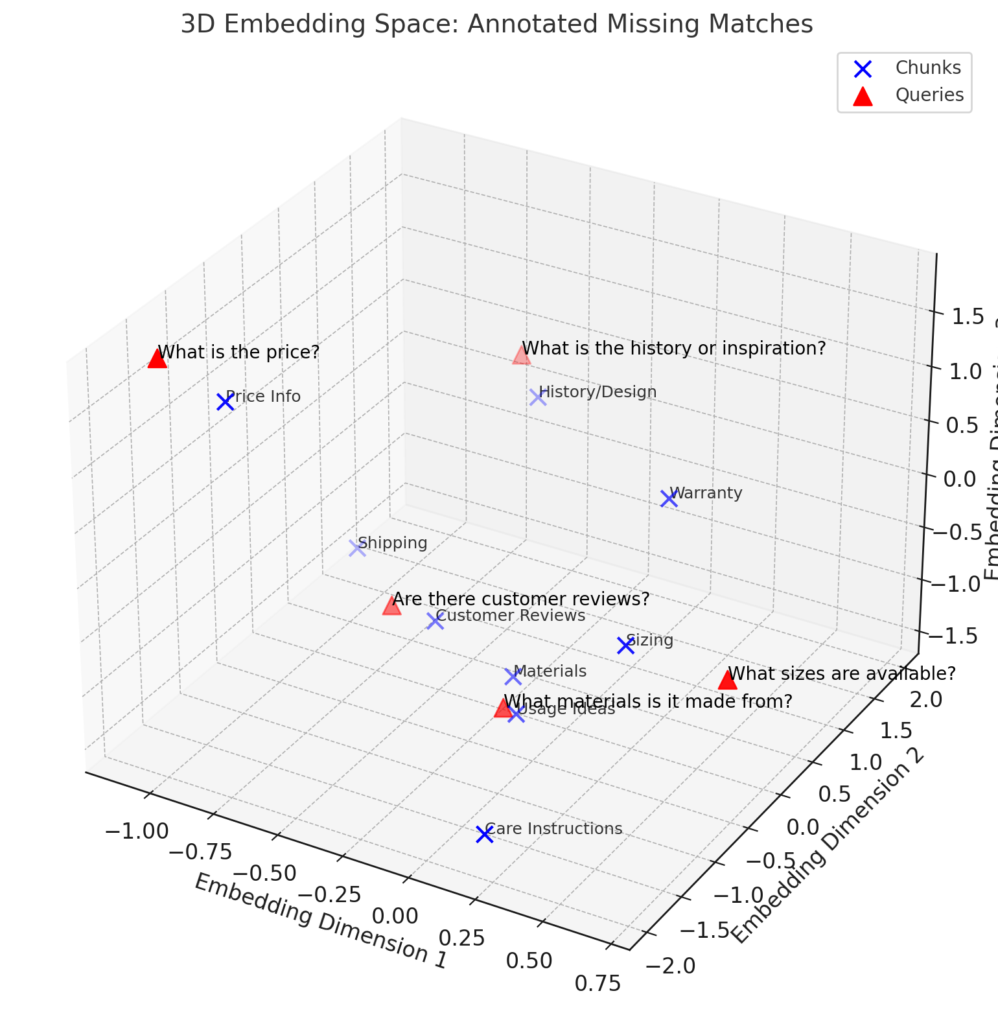

Here’s a simplified visualization of sub-queries and chunks in a 3D semantic area, exhibiting the place chunks and queries align — and the place they don’t.
📄 Important Tips for Content material Writers
Break your content material into clear, skimmable chunks—ideally 150–300 phrases (or 200–400 tokens). Use descriptive headings, quick paragraphs, and semantic components like bullet factors and tables to boost readability. Every chunk ought to concentrate on a single entity (e.g., Tiffany Knot Bangle) or a well-defined relationship involving that entity (e.g., Tiffany Knot Bangle is product of 18k gold)—fact-based, self-contained, and semantically aligned with consumer intent.
Google AI Mode and comparable methods don’t retrieve total pages—they retrieve significant fragments. In case your content material isn’t chunked and semantically structured, it merely gained’t floor.
That is how we put together content material for AI. And that is the way you keep seen when search turns into agentic.
👉 Curious to see how your product pages carry out in AI Mode?
Request a free AI Mode Chunk Audit or guide a demo with our workforce to get began.

